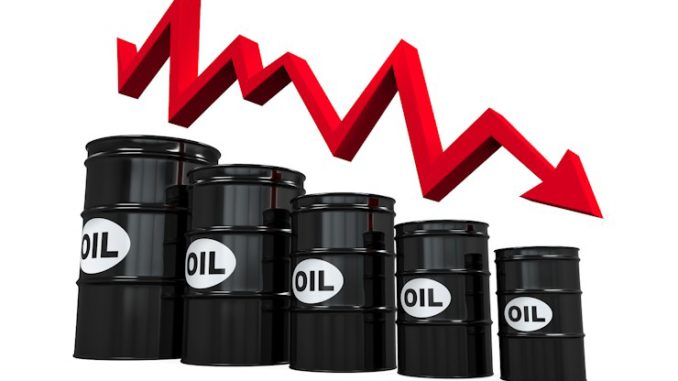
While living in The Hague, Holland as a young boy I often wondered what was on the other side of that vast expanse of water known as the North Sea. How could I have known about the vast crude oil reserves lying underneath the angry waters of the North Sea and its eventual exploration by the countries surrounding it?
Brent geese would fly over my province of South Holland much like Canadian geese fly over Montana on their way south. I now live in Terry, Montana, which is a long distance from Holland and the North Sea, but the word “Brent” once again has once again become part of my every day vocabulary while discussing the reasons for the fuel price increases.
The word Brent was originally derived from the naming policy of Shell UK Exploration and Production, operating on behalf of ExxonMobil and Royal Dutch Shell, which names all of its fields after birds. In the case of their North Sea operations the field was called Brent Goose, which was later shortened by the market to Brent encompassing similar type crude oils being produced in the area.
Brent Crude, Brent Sweet Light Crude, Oseberg, Ekofisk, and Forties are all part of the Brent crude oil sourced from the North Sea and traded on the Intercontinental Exchange in London (ICE). The Brent crude oil marker is also known as Brent Blend, London Brent and Brent Petroleum and is used to price two thirds of the world’s internationally traded crude oil supplies.
Why has the Brent crude oil benchmark price become so important to consumers of gasoline and diesel? The answer: It just recently replaced the New York Mercantile Exchange (Nymex) West Texas Intermediate (WTI) as the reference price for other “crude oil baskets” such as OPEC, Dubai, Russian and even Alaska North Slope crude oils.
The problem lies with the US Commodity Futures Trading Commission (CFTC) not having the power to regulate commodity transactions on the ICE. The big money is being moved into Brent and ICE thereby bypassing the Nymex and putting the WTI crude oil secondary to Brent. Even the Alaska North Slope crude oil posting is now tracking the Brent crude oil posting.
Bank of America Merrill Lynch recently increased its forecast for benchmark Brent crude for 2011 to $122 a barrel, and said that Brent could “briefly” surge above $140 a barrel in the second quarter of 2011. For WTI crude oil, the bank forecasted an average of $101 a barrel for this year, up from $87.
Bank of America also forecasted a 30 percent chance the price of Brent crude oil would reach $160 per barrel in 2011 with global demand for oil increasing and Libya supplying about 1 million barrels per day less than it did before the NATO coalition bombing started on March 19, 2011.
Each dollar differential in the price a barrel of crude oil represents 2.4 cents per gallon change for gasoline and diesel. When the price reaches the $140 level, it will add another 40 cent per gallon to today’s $3.856 per gallon national average price for unleaded gasoline per AAA Daily Fuel Gauge Report. That means $4.25 per gallon for regular gasoline by the end of May, which is right at the beginning of the summer driving season.
The average gasoline price in the US could reach $4.75 per gallon if the Brent crude oil reaches the predicted $160 a barrel sometime this year.
Crude oil prices now are determined not so much by supply and demand but by financial markets like the Nymex and ICE. Most oil is traded using derivative financial instruments that are not based on the physical exchange of crude oil (wet barrels in the trade) between seller and buyer. In the 1990’s, physical transactions accounted for about 30 percent of oil traded, but they now number less than 1 percent of contracts traded on the various exchanges.
Crude oil prices soared to new highs in 2005 when U.S. pension funds were permitted to invest their members’ retirement monies in oil futures. The US Congress convened a special hearing in 2008 after prices soared to $147 a barrel for WTI crude oil to consider the influence that speculation has on crude oil prices. Analysts calculated for each $100 million pumped into the oil market the price per barrel was pushed up by 1.6 percent.
In effect, oil has become a speculative commodity whose price is determined by how investors anticipate its value will increase or decrease at a given point in the future.
No sooner had Bank of America Merrill Lynch given its “bullish” prediction than the commodities market rallied and the price of Brent oil surpassed $120 per barrel. Nonetheless, do analysts have at least some idea of an upper limit to prices?
The two dominant theories of the 1970’s and 1980’s held that oil prices were limited by the prices for alternative energy sources to crude oil or, by contrast, that the price ceiling was determined by the purchasing power of oil consumers who are also unable to reduce demand. This is just partly true today.
In the end, the main “energy resource” of the past 40 years was not oil but energy efficiency, and consumers’ ability to save money by reducing consumption and using alternative energy sources as prices increased.
Brent Crude, Brent Sweet Light Crude, Oseberg, Ekofisk, and Forties are all part of the Brent crude oil sourced from the North Sea. The Brent crude oil marker is also known as Brent Blend, London Brent and Brent Petroleum and is used to price two thirds of the world’s internationally traded crude oil supplies.
Why has the Brent crude oil benchmark price become important to consumers of gasoline and diesel? The answer: It just recently replaced West Texas Intermediate (WTI) as the reference price for other “crude oil baskets” such as OPEC, Dubai and Russian crude oils.
The Intercontinental (ICE) US Dollar Index, which tracks the US dollar against six major world currencies dropped to 74.09, from 74.384 in late trading on Wednesday, April 20, 2011.
Immediately thereafter oil futures went up as the US dollar weakened. They had already been sliding after Standard & Poor’s warning about the US credit rating being threatened by rising debt levels. A weaker US dollar boosts commodities prices such as crude oil by making them cheaper for buyers using other currencies.
Bank of America Merrill Lynch recently increased its forecast for benchmark Brent crude oil by $36 a barrel and prices could “briefly” surge above $140 a barrel in the second quarter. Each dollar differential in the price a barrel of crude oil represents 2.4 cents per gallon change for gasoline and diesel. When the price reaches that level, which is an about $16 a barrel increase over today’s price, it will add another 41 cent per gallon to today’s $3.84 per gallon national average price for unleaded gasoline up to $4.25 per gallon by the end of May right at the beginning of the summer driving season.
“To reflect a tighter market, we upgrade our average second-quarter 2011 Brent crude oil forecast to $122 a barrel from $86 a barrel,” the bank said on March 9, 2011. For West Texas Intermediate (WTI) crude oil, the bank forecasted an average of $101 a barrel for this year, up from $87.
Bank of America also forecasted a 30 percent chance the price of Brent crude oil would reach $160 per barrel in 2011 with global demand for oil increasing and Libya supplying about 1 million barrels per day less than it did before the NATO coalition bombing started on March 19, 2011.
Crude oil prices are determined not so much by supply and demand but by financial markets like the New York Mercantile Exchange (Nymex) and the Intercontinental Exchange in London (ICE). Most oil is currently traded using derivative financial instruments that are not based on the physical exchange of crude oil (wet barrels in the trade) between seller and buyer. In the 1990s, physical transactions accounted for about 30 percent of oil traded, but they now number less than 1 percent of contracts traded on the various exchanges.
Crude oil prices soared to new highs in 2005 when U.S. pension funds were permitted to invest their members’ retirement monies in oil futures. U.S. Congress convened a special hearing in 2008 after prices soared to $147 a barrel for WTI crude oil to consider the influence that speculation has on crude oil prices. Analysts calculated for each $100 million pumped into the oil market the price per barrel was pushed up by 1.6 percent.
In effect, oil has become a speculative commodity whose price is determined by how investors anticipate its value will increase or decrease at a given point in the future.
That is why prices tend to reflect official projections. No sooner had Bank of America Merrill Lynch given its “bullish” prediction than the commodities market rallied and the price of oil surpassed $120 per barrel. Nonetheless, do analysts have at least some idea of an upper limit to prices?
The two dominant theories of the 1970s and 1980s held that oil prices were limited by the prices for alternative energy sources to crude oil or, by contrast, that the price ceiling was determined by the purchasing power of oil consumers who are also unable to reduce demand. This is partly true today.
The main “energy resource” of the past 40 years was not oil but energy efficiency. Our ability to save money by reducing consumption and using alternative energy sources as prices increased.
You may have heard the joke about the girl with gleam in her eyes, who was goosed while brushing her teeth. U.S. consumers are slowly losing that gleam in their eyes after being goosed by Brent, the new ruler of the roost in determining the price for crude oil, when they see the price at the pump going up every day.
About The Author – Bob van der Valk lives in Terry, Montana and is a Petroleum Industry Analyst with over 50 years of experience in the petroleum, gasoline and lubricants industry. He has often been quoted by news media and his opinions are also solicited by government entities in addition to his daily business of managing large scale supply and marketing operations.
